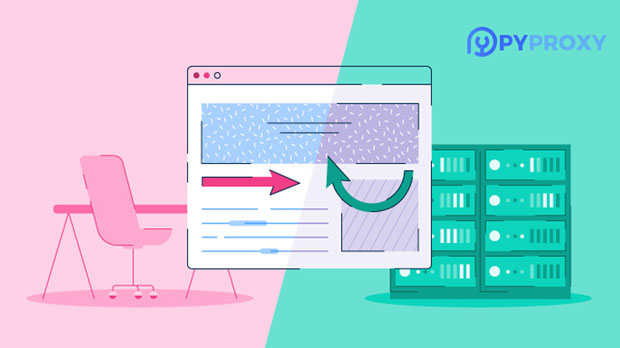A free socks5 proxy server list refers to a collection of publicly available proxy servers that use the SOCKS5 protocol to route internet traffic. SOCKS5 (Socket Secure 5) is a versatile proxy protocol that allows users to bypass geo-restrictions, hide their real IP addresses, and secure their online activities. These proxy servers typically do not offer encryption, but they facilitate a variety of network protocols, making them popular for activities that require anonymity, such as online gaming, web scraping, or accessing restricted content. In this article, we will explore what a free socks5 proxy server list is, its primary uses, benefits, limitations, and how to choose the right one. Understanding SOCKS5 Proxy ServersA SOCKS5 proxy is a type of proxy server that relays internet traffic between a client (such as a browser or application) and the internet. Unlike traditional HTTP or HTTPS proxies, which are designed to handle specific web traffic (mainly HTTP or HTTPS requests), SOCKS5 operates at a lower level and can support any kind of internet traffic, including email, file transfers, and peer-to-peer connections.The main advantage of SOCKS5 over other proxies is its flexibility and versatility. SOCKS5 does not modify or filter the content being transmitted between the user and the internet, allowing for greater anonymity and compatibility with a wider range of applications. The SOCKS5 protocol supports authentication, meaning that only authorized users can access the proxy server.What Is a free socks5 proxy Server List?A free SOCKS5 proxy server list is a compilation of SOCKS5 proxy servers that are made available to the public at no cost. These lists can be found on various online platforms, forums, and websites. They typically contain IP addresses, ports, and sometimes login credentials to connect to these proxy servers.These lists are shared by users or organizations that want to provide public access to proxy servers for different reasons. The servers on these lists are usually maintained by individuals or groups who make them available for general use. However, there is often no guarantee of their performance, security, or reliability, which is why users should exercise caution when using free socks5 proxies.Primary Uses of Free SOCKS5 Proxy ServersThe uses of free SOCKS5 proxy servers can vary widely depending on the needs of the user. Some of the most common applications include:1. Bypassing Geographical Restrictions Free SOCKS5 proxies are often used to access content that is restricted in certain regions. For instance, users in countries with limited internet freedom may use these proxies to access blocked websites, social media platforms, or streaming services. Since SOCKS5 proxies can route traffic through different locations, users can effectively "change" their IP address to appear as if they are browsing from a different region.2. Enhancing Privacy and Anonymity One of the key benefits of using SOCKS5 proxies is the ability to mask a user’s real IP address. By routing internet traffic through a remote proxy server, users can make their online activities more difficult to trace. This is especially valuable for individuals who are concerned about their privacy and wish to avoid being tracked by websites, advertisers, or malicious entities.3. Improving Security for Specific Applications While SOCKS5 proxies do not offer encryption, they still offer security benefits by hiding the user’s real IP address. Many users deploy SOCKS5 proxies in conjunction with encryption methods such as Virtual Private Networks (VPNs) for added security. They are often used in applications that require anonymity, such as torrenting, gaming, or accessing sensitive information.4. Web Scraping and Data Mining Free SOCKS5 proxies are also popular among individuals or organizations that engage in web scraping or data mining. By utilizing multiple proxy servers, users can avoid IP bans or rate limits imposed by websites. SOCKS5 proxies can rotate IP addresses, allowing for more efficient data collection and less risk of being detected.5. Online Gaming Gamers use SOCKS5 proxies to reduce lag, bypass region locks, or improve connection stability. By connecting to a proxy server located closer to the gaming server, players can reduce ping times and enjoy a smoother gaming experience. Furthermore, SOCKS5 proxies help gamers bypass restrictions imposed by game publishers, enabling them to access games or content that is not available in their region.Benefits of Using Free SOCKS5 Proxies1. Cost-Effective The most obvious benefit of using free SOCKS5 proxies is that they do not require any financial investment. For users who do not need high-speed, high-security services, free SOCKS5 proxies can be an economical solution for basic browsing, accessing content, or maintaining anonymity online.2. Anonymity and Privacy SOCKS5 proxies offer a greater degree of privacy compared to standard HTTP proxies. By masking the real IP address, users can browse the web without revealing their physical location or identity. This feature is particularly appealing to those who are concerned about online surveillance, advertising, or data collection practices.3. Flexible Usage Since SOCKS5 proxies support a wide variety of internet traffic, they are highly versatile and can be used in a wide range of applications. Whether for web browsing, gaming, or data scraping, SOCKS5 proxies can adapt to the specific needs of the user.Limitations of Free SOCKS5 Proxy ServersWhile free SOCKS5 proxy servers offer several benefits, they come with a number of limitations:1. Security Concerns Free SOCKS5 proxies generally do not provide encryption or secure data transmission, making them vulnerable to interception or monitoring. Users should be cautious when transmitting sensitive information over these proxies. They are best used for non-sensitive activities where security is not a primary concern.2. Unreliable Performance Free proxies can be slow and unreliable due to the high number of users sharing the same server. Bandwidth limitations, server downtimes, and inconsistent connection speeds are common problems associated with free SOCKS5 proxies. This can lead to frustration for users, especially if they are trying to access time-sensitive content or services.3. Limited Support and Maintenance Free SOCKS5 proxies are often maintained by volunteers or enthusiasts, and they may not offer customer support or regular updates. Additionally, free proxies can be taken down without notice, leaving users without a reliable connection. This lack of support can make it difficult to troubleshoot issues or resolve connectivity problems.4. Risk of Malicious Actors Some free SOCKS5 proxies may be set up by malicious entities looking to intercept users' data or inject malware. Since these proxies are publicly accessible, users run the risk of connecting to servers that are not trustworthy, which can compromise their privacy or security.How to Choose the Right Free SOCKS5 Proxy ServerWhen selecting a free SOCKS5 proxy server from a list, users should consider the following factors:1. Server Location Ensure that the proxy server is located in the region you want to appear to be browsing from. This is important if you're using the proxy to bypass geo-restrictions or access region-locked content.2. Connection Speed Look for SOCKS5 proxies that provide fast and stable connections. Free proxies often suffer from slow speeds due to high usage, so it’s essential to test a few options before committing.3. Authentication Requirements Some free SOCKS5 proxies require authentication, which can add a layer of security. Be sure to check if the proxy server requires a username and password for access.4. Reputation and Reviews Check reviews and user feedback before using a free SOCKS5 proxy. This can help identify trustworthy proxy servers and avoid potentially malicious ones.ConclusionIn summary, free SOCKS5 proxy servers are valuable tools for users seeking anonymity, privacy, and access to restricted content. They are versatile, cost-effective, and can be used for a wide range of activities such as bypassing geo-blocks, securing online activities, or scraping web data. However, users should be aware of the limitations, such as security risks, reliability issues, and the potential for encountering malicious actors. When using free SOCKS5 proxies, it is important to exercise caution, test different servers, and be mindful of the risks involved to ensure a secure and efficient browsing experience.
Jan 07, 2025
![arrow]()



















































